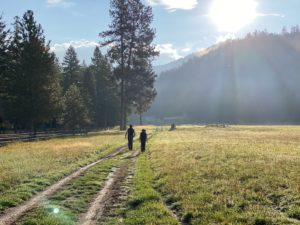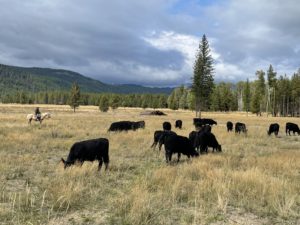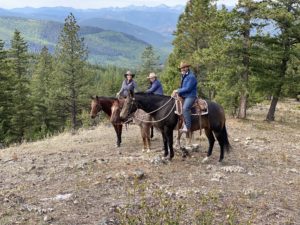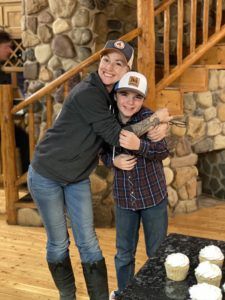Volume 16, Issue 29
Hello Everyone!
Today, I’d like to share with you the process of moving steers. Now, a lot of folks think that this is a fairly simple task. I mean the movies make it look so easy, right? We’ve all seen it: A bunch of cowboys all lined up behind a huge group of cattle as they move smoothly across the plains. Sounds pretty perfect. Well, out here in Montana, in the wilds of our little valley, there’s more to it than that and while you might have a plan on how you’d like your cattle to go, the steers might have their own plan in mind and you’ve got to be ready to adapt at every turn.
Moving steers from one location to the next seems like and easy task, but in reality there’s an almost scientific way to go about it and if you make even the slightest incorrect adjustment all your cattle will burst from formation like a firework going off, steers running in every direction! So, lets talk about how a steer thinks.
Cattle are prey animals by nature. They have inherent behavioral traits that help protect them against predators. We call this herd instinct. Their greatest defense against predators, especially in the wild, is to stick together as a group. Often times, when we are out in search of steers we will find them in small groups and we know that when we see one there are more than likely several others close by. By attempting to keep these groups together, in theory, they will move easier for you. But just because they stick together doesn’t mean that it’s smooth sailing from there.
When moving cattle you need to be aware of everything around you. Where are your steers headed? Do you have all your riders in their positions? Are they moving in a calm manner? A general rule of thumb is that wherever your steers are looking IS where they are going to go. So if your herd pauses and they are all looking to the right you had better have your group hug that right side of the road to encourage them to keep on their path. Now you have to be careful because if you add to much pressure from the wrong angle then you might cause them to spill the direction where they were looking. It doesn’t take much to cause them to spill, it could be as big a change as you trotting your horse right at them too closely or as little as your horses rib cage pushing towards them. It’s amazing how little it takes to influence your herd. The level of awareness you need to move cattle properly, along with good quality horsemanship is key to having a successful cattle drive. So, keep your eyes open, head on a swivel and your horse nice and straight. If you hold your position and keep life in your cattle all should go well, in theory of course.
Until next time folks…
Em




